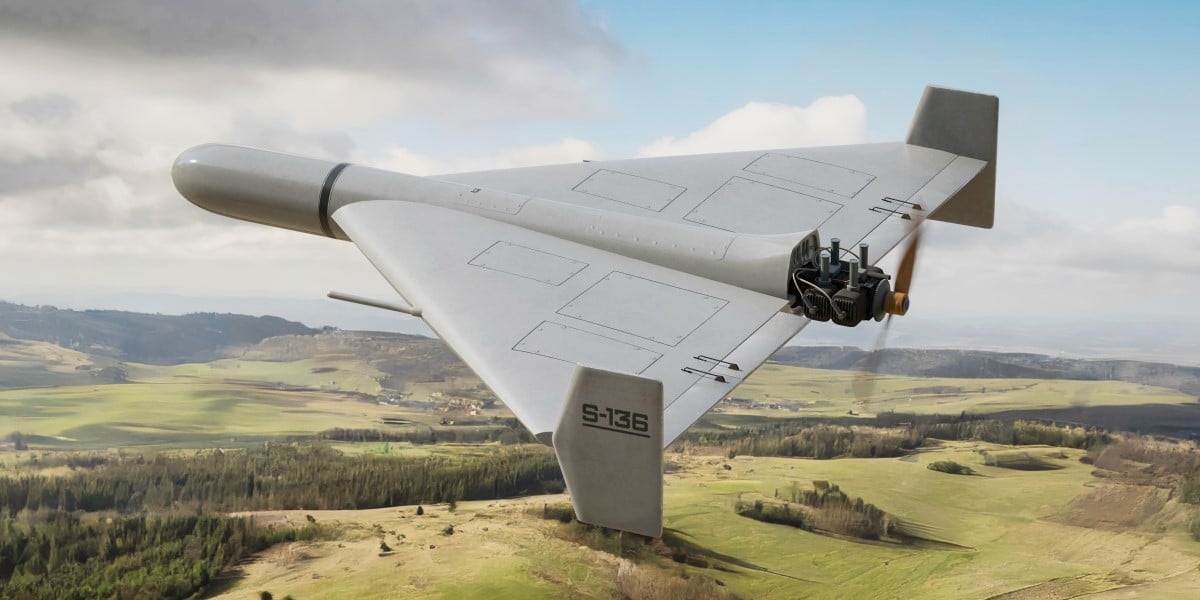Starlink-branded Hardware Reportedly Found Amid Wreckage Of Downed Russian Drone

A Russian drone shot down over Ukraine appears to have been fitted with equipment made by Elon Musk's space broadband service Starlink, according to Ukrainian media.
The claims – including pictures of wreckage that bears a Starlink logo – emerged in a report by Ukrainian outlet Defence Express and on a Telegram channel.
The Starlink equipment appears to be a user terminal, and if fitted to the drone could have provided internet connectivity from the Starlink satellite constellation.
The Defence Express report claims the wreckage it depicts was shot down during a Wednesday incident during which Ukraine intercepted 28 of 32 drones sent by Russia.
That incident is also reported by the General Staff of the Armed Forces of Ukraine, which detailed it on Facebook.
Images of the downed drones apparently depict a model called the Geran-2 – a Russian-made copy of Iran's Shahed 136 drone. The propeller-powered drones, which have a range of around 2,500 kilometers, typically carry a 50kg warhead or surveillance equipment.
Starlink typically offers upload speeds of between five and 20Mbit/sec – more than enough for a drone using the service to stream data and video in real time.
- Is Russia using Starlink in Ukraine? Congress demands answers
- Starlink, shot by both sides in Ukrainian fracas, lives to fight on
- Bombshell biography: Fearing nuclear war, Musk blocked Starlink to stymie Ukraine attack on Russia
- China claims Starlink signals can reveal stealth aircraft – and what that really means
The wreckage inscribed with a Starlink logo reportedly has intact serial numbers – although published reports have obscured them.
If the item is indeed Starlink hardware, it should be possible to prove its origins – perhaps even where it was bought, and by whom.
Verification of the device would lend credence to multiple reports that claim Russian ground forces routinely use Starlink for internet access in the field. Democratic members of Congress have asked the US government to investigate the issue.
Elon Musk insists that the units aren't sold in Russia, and that Starlink won't work in the country.
But Moscow has ways of avoiding bans – as does Iran – and could have found a way to build Starlink-equipped kit that only becomes active once it crosses the border into Ukraine where SpaceX's service is allowed.
As everyone except Vladimir Putin seems to understand, Ukraine is not Russia.
Ukraine has been an enthusiastic adopter of Starlink after Elon Musk responded to Russia's invasion by shipping antennas valued at over $80 million to the country.
The Pentagon later stepped in to fund the effort, with the EU also helping out.
In response, Russia threatened to shoot down satellites being used to help Ukrainian forces. The Chinese are also considering what to do about Starlink's constellation in the event of a future conflict.
The Ukrainian armed forces have used Starlink for their own drones. This caused a controversy last year when Walter Isaacson's biography of Musk claimed that the Starlink supremo had refused a Ukrainian request for the drones to be provided with internet access for an attack on the Russian fleet in the captured port of Sevastopol. Musk later said he refused because he didn't want to escalate the war.
It should be fairly obvious to Starlink if its kit is used on a drone or other aircraft, as most antennas don't move at high speed. The ISP had no comment at the time of publication. ®
From Chip War To Cloud War: The Next Frontier In Global Tech Competition
The global chip war, characterized by intense competition among nations and corporations for supremacy in semiconductor ... Read more
The High Stakes Of Tech Regulation: Security Risks And Market Dynamics
The influence of tech giants in the global economy continues to grow, raising crucial questions about how to balance sec... Read more
The Tyranny Of Instagram Interiors: Why It's Time To Break Free From Algorithm-Driven Aesthetics
Instagram has become a dominant force in shaping interior design trends, offering a seemingly endless stream of inspirat... Read more
The Data Crunch In AI: Strategies For Sustainability
Exploring solutions to the imminent exhaustion of internet data for AI training.As the artificial intelligence (AI) indu... Read more
Google Abandons Four-Year Effort To Remove Cookies From Chrome Browser
After four years of dedicated effort, Google has decided to abandon its plan to remove third-party cookies from its Chro... Read more
LinkedIn Embraces AI And Gamification To Drive User Engagement And Revenue
In an effort to tackle slowing revenue growth and enhance user engagement, LinkedIn is turning to artificial intelligenc... Read more

